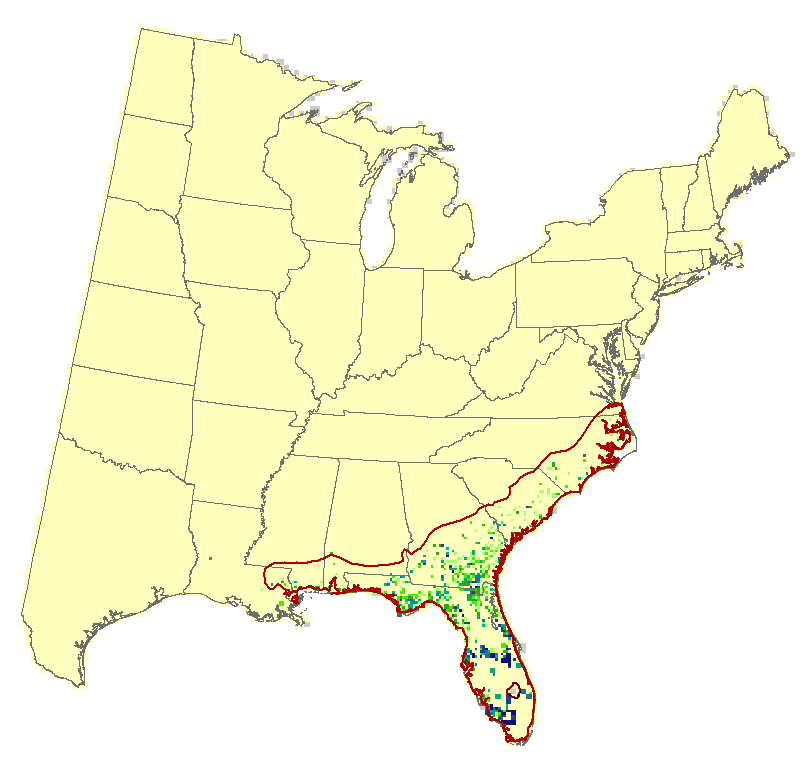pond cypress (Taxodium ascendens)
Model Reliability: Medium
| GCM SCENARIO | % Area Occ | Ave IV | Sum IV | Future/Current IV |
|---|---|---|---|---|
| Actual | 2.1 | 13.5 | 8336 | N/A |
| RFimp | 2.8 | 7.6 | 6291 | 0.75 |
| CCSM45 | 6.5 | 8 | 15274 | 2.43 |
| CCSM85 | 6.4 | 9.8 | 18319 | 2.91 |
| GFDL45 | 6.3 | 10.6 | 19387 | 3.08 |
| GFDL85 | 8.8 | 11.2 | 28918 | 4.6 |
| HAD45 | 6.2 | 8 | 14398 | 2.29 |
| HAD85 | 7.1 | 8.7 | 18223 | 2.9 |
| GCM45 | 7.6 | 7.4 | 16356 | 2.6 |
| GCM85 | 9.5 | 7.8 | 21823 | 3.47 |
Regional Summary Tree Tables
Summaries for tree species are available for a variety of geographies, in both PDF and Excel format. These summaries are based on Version 4 of the Climate Change Tree Atlas
Interpretation Guide
Pond cypress is a narrowly distributed (1.7% of area), sparse, but of high importance species where it occurs in bottomlands. As expected, it behaves very similarly to its cousin bald cypress with regards to capability to cope - fair rating. It gains suitable habitat, especially under the harsher RCP 8.5, and again up the eastern seaboard. SHIFT also suggests it appropriate for infilling, along with the contstraints on natural northward migration up the coast over 100 years.
Family: Taxodiaceae
Guild: opportunistic, long-lived intermediate
Functional Lifeform: large deciduous conifer
| 5 | 1.56 |
| -1.05 |  |
MODFACs
What traits will impact pond cypress's ability to adapt to climate change, and in what way?:



